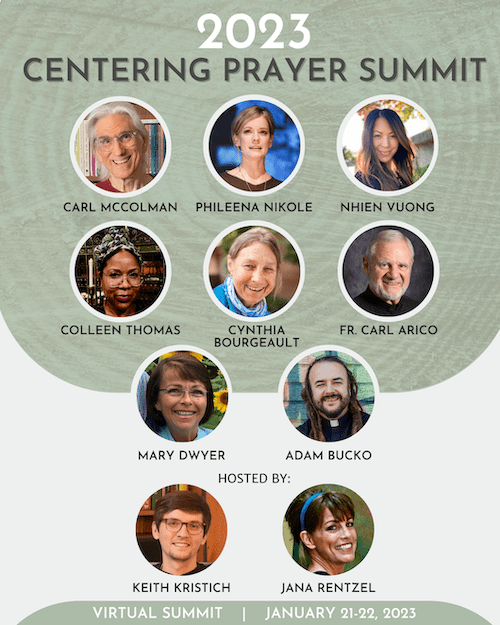Over the past ten years, I’ve tried to meditate about a billion times.
Every time I start, I love it.
And then I leave it.
But there’s one method for meditation that has continuously been a source of refuge for me: Centering Prayer.

It’s simple to understand, quick to internalize, and while the process of meditation itself is a challenge (like anything that shifts our mindsets), Centering Prayer is the most potent method I’ve ever found to slip into the “is-ness” of silence.
But while many of us want to meditate, there are tons of reasons we hesitate.
Perhaps it’s a question of priorities.
We want to meditate, we know its benefits, but we have so many other things going on! If we’re honest with ourselves, it’s not that we don’t have time. It’s that we have other priorities that beat out the benefits of sitting with the Divine.
(And that’s okay – no reason to add judgment to a conversation around meditation.)
Or perhaps that’s not the issue.
Maybe it’s one of these:
- You don’t know what to do with your thoughts when it becomes silent.
- You think meditation is selfish or self-centered.
- You have an image of god that you don’t want to sit with.
- You want or feel you need accountability in keeping a practice.
Centering Prayer can’t solve these mindsets and beliefs – but it is a method that can help you settle into a new understanding of what you need, what the Divine feels like, and your own sense of inherent dignity.
Here’s how to get started:
Step 1: Choose a sacred word as the symbol of your intention to consent to the Divine’s presence and action within.
When you sit down for your practice, pick a word that can serve as a symbol of your intention to experience the Divine’s movement within you.
Some ideas: peace, calm, Divine, love, breathe, rest, open, faith.
It’s not a mantra and shouldn’t be more than two syllables: quick and easy!
Step 2: Sitting comfortably and with eyes closed, settle briefly and silently introduce the sacred word as the symbol of your consent to the Divine’s presence and action within.
Now, that you have your word (your symbol of intention), take a few moments to simply calm yourself. I recommend getting comfy, taking some deep breaths, and intentionally inviting your muscles to relax.
Then, slowly and silently introduce your sacred word to yourself…
Step 3: When engaged with your thoughts, return ever-so-gently to the sacred word.
…just once! Remember: this isn’t a mantra to say over and over again.
Instead, after introducing it, you return to it only when you find your mind wandering. You might think of it as an anchor that keeps you connected to your intention when your thoughts pull you away.
And this is the practice! If this is your first time with the Centering Prayer method, try doing it for just 10 minutes. During those 10 minutes, just keep returning to your word.
Sure, your thoughts will jump around. That’s part of it!
The work of this practice is, just like in life, noticing what’s going on (your thoughts in this case) and setting your intention on being present with it and seeing the Divine in the midst of it.
Over and over again.
Step 4: At the end of the prayer period, remain in silence with eyes closed for a couple of minutes.
When the meditation ends, take a couple minutes to just relax. Move slow. Breathe.
This is a time of allowing your nervous system to rest while slowly bringing your attention back to your context.
Want support with your practice or more help getting started?
In just over a month, my friend Keith Kristich will be hosting the second annual Centering Prayer Summit.
For those of you who are dabbling with meditation or have been meditating for years, this will be a great opportunity to hear from some of our wisest teachers, including Cynthia Bourgeault, Phileena Nikole, Adam Bucko, Colleen Thomas, and Carl McColman.
If you purchase before the end of December 1oth, you’ll get a free gift registration for a friend or family member ($99 value)! Two for the price of one! I hope you’ll check it out!














